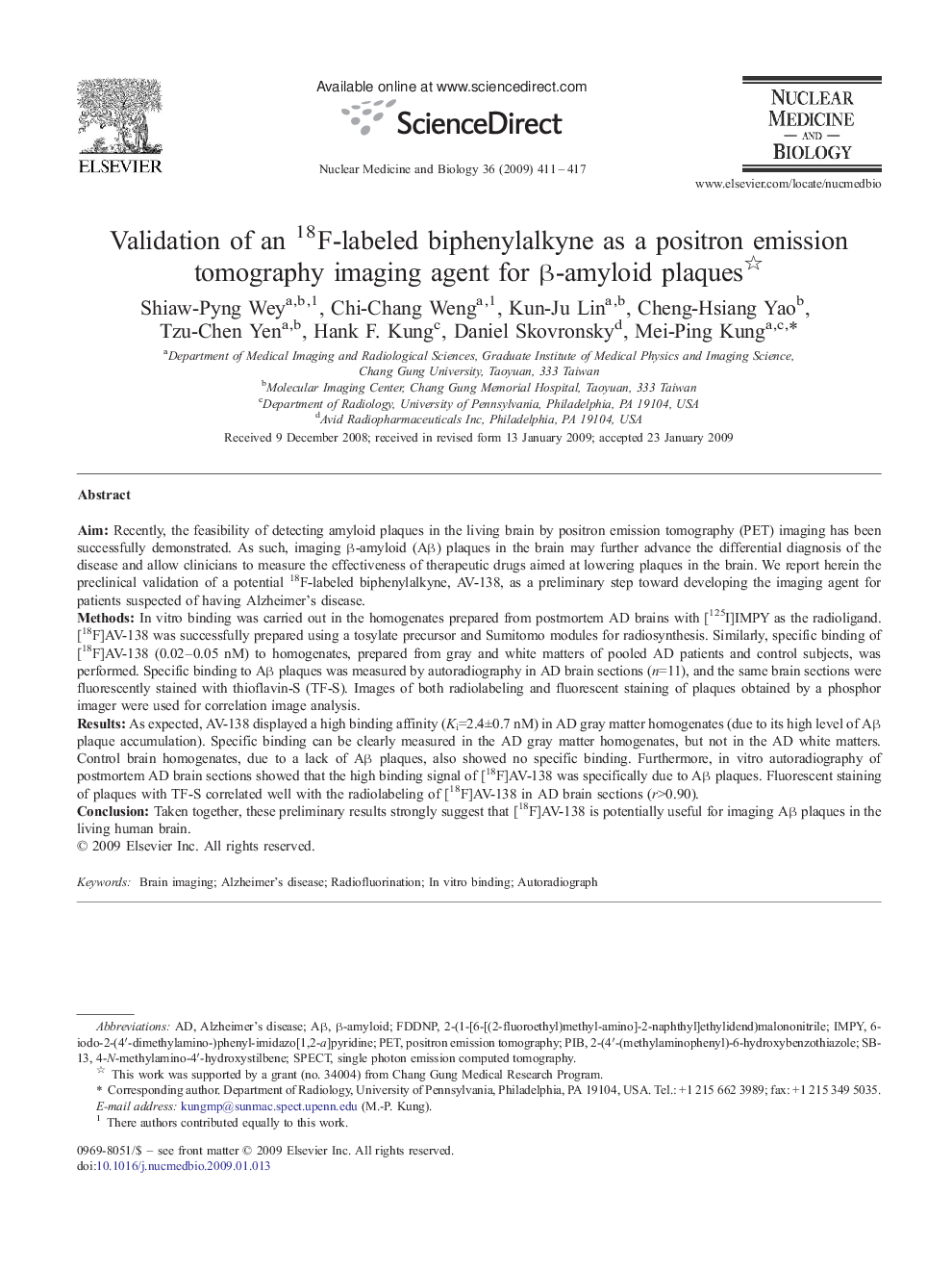| کد مقاله | کد نشریه | سال انتشار | مقاله انگلیسی | نسخه تمام متن |
|---|---|---|---|---|
| 2154166 | 1090220 | 2009 | 7 صفحه PDF | دانلود رایگان |

AimRecently, the feasibility of detecting amyloid plaques in the living brain by positron emission tomography (PET) imaging has been successfully demonstrated. As such, imaging β-amyloid (Aβ) plaques in the brain may further advance the differential diagnosis of the disease and allow clinicians to measure the effectiveness of therapeutic drugs aimed at lowering plaques in the brain. We report herein the preclinical validation of a potential 18F-labeled biphenylalkyne, AV-138, as a preliminary step toward developing the imaging agent for patients suspected of having Alzheimer's disease.MethodsIn vitro binding was carried out in the homogenates prepared from postmortem AD brains with [125I]IMPY as the radioligand. [18F]AV-138 was successfully prepared using a tosylate precursor and Sumitomo modules for radiosynthesis. Similarly, specific binding of [18F]AV-138 (0.02–0.05 nM) to homogenates, prepared from gray and white matters of pooled AD patients and control subjects, was performed. Specific binding to Aβ plaques was measured by autoradiography in AD brain sections (n=11), and the same brain sections were fluorescently stained with thioflavin-S (TF-S). Images of both radiolabeling and fluorescent staining of plaques obtained by a phosphor imager were used for correlation image analysis.ResultsAs expected, AV-138 displayed a high binding affinity (Ki=2.4±0.7 nM) in AD gray matter homogenates (due to its high level of Aβ plaque accumulation). Specific binding can be clearly measured in the AD gray matter homogenates, but not in the AD white matters. Control brain homogenates, due to a lack of Aβ plaques, also showed no specific binding. Furthermore, in vitro autoradiography of postmortem AD brain sections showed that the high binding signal of [18F]AV-138 was specifically due to Aβ plaques. Fluorescent staining of plaques with TF-S correlated well with the radiolabeling of [18F]AV-138 in AD brain sections (r>0.90).ConclusionTaken together, these preliminary results strongly suggest that [18F]AV-138 is potentially useful for imaging Aβ plaques in the living human brain.
Journal: Nuclear Medicine and Biology - Volume 36, Issue 4, May 2009, Pages 411–417